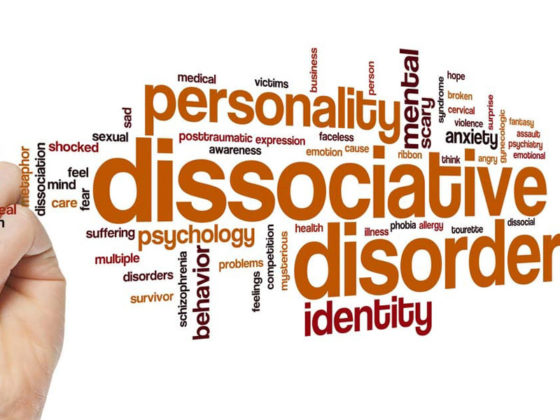In a typical academic text for an introduction to criminology class, a particular case study introduces each chapter. In doing so, the author appears to demonstrate a probable correlation between the relevance of criminology and the criminal behavior demonstrated by the case at hand. Yet the incident portrayed is of a high social profile nature. That is, in terms of occurrence, the criminality has drawn national attention do to media fascination. Of which the reader should probe further in more detail to address all possible evidentiary aspects.
A further point from the academic reference is the notion of defining in a general sense what criminology represents. In brief, the field in the broadest scope possible allegedly, according to many in academia, is the so-called “scientific study” of the causes, environment, magnitude and control of criminal behavior. This is where the controversy becomes controversial. Encampments line up on both sides of the great divide in relation to causality. Before any speculations, about criminology or criminality come in to focus, discussion should consider what a science is.
What does scientific study actually mean? Is that simplistic conjecture supposedly inferring that somehow an area of “social studies” is exactly similar to physics or biology? What about astronomy, quantum physics, chemistry, etc. are they the same as criminology? This is absolutely a serious notion to consider, otherwise serious investigative effort at any level of analysis become highly tainted by egregious fallacies of inference. Unsubstantiated facetious claims regarding the cause and effect of illicit anti-social behaviors devolve to a realm of ignorance.
As such, a science is often defined as that which proceeds from a naturalistic basis, the structure of nature, to pursue the investigation of real matter, or tangible materiality. This is likewise combined with objectively measurable and provable evidence driven data. From a logical process of deduction, the scientific method follows rational inquiry. In other words, can you put it, whatever it is, under a microscope and be relatively certain it’s provable. You might ask, what is the “blood test”, or x-ray for that? Can you do a DNA analysis and show where that particular things exists? Is there scientific validation to substantiate the investigative process?
The life and death seriousness of every day criminality requires real scientific authenticity. Substantial reliability in the consistent affirmation of evidentiary substantiation remains vital to the multifaceted criminal justice systems. From the classical school perspective, or the rational choice viewpoint, such notions translate into the essential viability of real-world experience.
This infers the necessity of the knowledge and experience the practitioner achieves dealing with the reality of human nature. It evolves from the intuitive attribution learned from a diversity of human interactivity, whereby some of that exposure is dangerous and life threatening.
Insight is critical in the real world of crime fighting. That part of criminology applies to the practitioner’s worldliness of actual exposure to “dark side” of human behavior. In addition, scientific methodology becomes a more poignant reality. It is one thing to study criminals from a safe distance, as in the classroom, and theorize about motivational factors. Yet, it is quite another thing to be involved up close and personal in actual confrontation with the perpetrator. Working an actual crime scene in the aftermath of a horrendous criminal incident is especially distinctive. Such interactivity is more divergent than reading about the case from a textbook.
Real-world investigative processes hunt for the hardcore seriousness of scientific validation. By application of from the realm of the “forensic sciences”, that would include not only such areas as physics, chemistry, biology, but also botany, entomology, physiology and pathology. In these “ologies”, one finds the necessity for exceptional confirmation of the truth. In this sphere, intentions are directed toward foolproof provability. By contrast, in the non-practitioner spectrum of the theoretician, the safety of the classroom insulates from the harness of realty.
From afar, aloof, philosophically sufficient, politically sanitized, peer review insulated, and subjectively self-validated, one can easily speculate an array of nebulous notions. Perpetrating a so-called scholarly discipline as criminology as a “real science”, may invite some critical investigators to prefer using the term pseudoscience. Likewise, the same should apply to other philosophies that clamor to be a “science with scientists”.
This pertains to but is not limited to the associated fields of psychology and sociology. For the sake of an adult grown up conversation, to call the schools of thought a pseudoscience ought not to be taken as condescending or dismissive. On the contrary, one ought to be predisposed to giving and receiving alternative perspectives in the diverse realm of “social studies”.
In terms of criminology, the diversity of thought is rampant, especially in mainstream society, where personal views tend to be more emotional than factional. Within the supposed hallowed halls of academia, where theoreticians are more prevalent than practitioners, it appears everyone has some sort of opinion. From student to faculty, many ideas verbalize and theorize a broad spectrum of personal viewpoint. Meanwhile, in the typical criminal justice department, or criminology program, theories of one sort or another claim an assortment of causal factors.
Another standard criminal justice text attempts to contrast the two main antagonists, the classical school versus the positivistic school. Where classicists hold the criminal responsible for his or her exhibition and execution of individual free will, positivists tend to look at external causality. This might include demonic possession, in which case, a priest might be the primary investigator. The textbook in question here offers a summary of about one page on the classical view, and three pages on the positivistic perspective. A critical slant.
A review of several texts offering consideration of criminological studies presents the same kind of inclination. Not presented in the same manner as competing theoretical constructs, classical criminology is mentioned quickly in favor of assertions that are more contemporary. Choice in criminal decision making by way of free will is countered by a variety of other philosophical views. The latter often bias their claims in the direction of mitigations such as biology, traits, social ecology, environmental conditions, the prevalence of instruments of death, and so on.
Arising out of 18th century philosophy, the classical school of criminal behavior might be considered an older assessment of criminal behavior during the age of enlightenment. It at least predates the advent of so-called positivism, which gave way to other fields of study. Today, “ration choice theory” is offered as the modern version of classical theory. Again, it is all about theory and which one an investigator wishes to follow. In this writing, the advocacy for this particular framework of pseudoscience is in favor of the rational choice perspective.
Accordingly, the classical view or rational choice assessment pertains to decision-making on the part of the individual. Premeditating, willfully contriving, and planning from malice aforethought, the criminal undertakes his or her criminality from the standpoint of gain versus risk. One chooses his or her criminal perpetration with regard to a “cost-benefit” analysis.
From the classics, as well as the transformation into rational choice constructs, to the trait theory speculations, the quest for definitive answers transcends generations. In 100 years or so of debate, the not much has changed concerning explanations about human behavior. For those delving into the physiological recesses of the human body, in particular the brain, “trait” specialization claims criminality is a function of bio-chemical or mental processes inside the individual. Abnormalities in the physical or the alleged psychological sphere are precursors to maladaptive behaviors.
Individualities of this nature, usually allude to criminal tendencies that are inherited or others the culmination of “natural selection”. From there, some would argue that biological factors emanate from a set of “genetic conditions”.
Seemingly, when “social studies” researchers incline toward the “DNA” factor, they assert that behavior is the result of genetic transmission. In a real world frightening sense, such might suggest the scary prospects of the 19th theories regarding the “natural born criminal”. While these speculations were discredited, they are still around.
The so-called “crime gene”, as mentioned in contemporary discussions, has never gone away. Some claimants refer to the “sleeper cell” some mythic hidden darkness inside the human anatomy waiting to wreak havoc in illicit activities. Likewise, as people believe what they want to believe, even absent scientific validation, the genetic specificity is elusive. Whether assertions of “brain damage”, chromosomal deformity, or “psychic syndrome”, scientific evidence for any of these possibilities remains inconclusive. You, hope springs eternal in subject validation.
Quite a few members of the criminology community, as well as other branches of the diverse family tree in “social studies’, continue to promote a simplistic and unsubstantiated conclusions. Unfortunately, an unsettled or otherwise unproved theory reaches into the public area and influences public policy. It might be legislation, which becomes a law, or the speculative concept could enter the courtroom as a defense argument. As such, correlation is not causation, an opinion is not evidence in most instances, and convenient anecdotes are not necessarily proof.
With all theories regarding human nature and human behaviors, caution is warranted as to any alleged explanation that seeks physiological or psychological singular finality. For the good intentions of non-scientist researchers, the flaw in philosophical concepts revolves around the inability to substantially prove a direct link between a tumor or glandular abnormality and subsequent criminal behavior. Behavior is extremely complicated.
In the pseudosciences, or the various areas of “social studies” like criminology, a wide assortment of philosophical inquires attempt to understand why people do bad things. Often, in efforts to debunk or otherwise malign the “old school”, as in classical criminology, some will claim allegiance to something called “trait theory”. For example, in another sampling from a standard “introduction to criminal justice” text, the authors try to counter rational choice perspectives by using the trait approach. While the rational choice adherent considers all behavior, including criminal behaviors, as choices, the “traitists” poses the question, what if it is irrational.
For such a simplistic attribution, the explanation is that rational is rational no matter what someone else thinks. Regardless of ideology, background, history, etc., willful decision-making is exactly that.
Even if another investigator suggests being irrational offers opportunities for excuses, denials of responsibility, and so on, the rational theorist stands by rationality. Trait theories claim that certain, albeit mysterious, biological and psychological traits predispose them to mischief.
With those alleged tendencies, researchers contend internal factors incline an individual in the direction of maladaptive behaviors. While specificity remains elusive, even though a few investigators are intrigued by “brain science”, the ability to look inside the “criminal mind” is largely open to fascinating speculation. Imagine for instance the mechanistic ability to read another person’s thoughts and know precisely what they are thinking. Mind reading sometimes referred to as mind-to-mind, is frequently treated cast into the sphere of pseudoscience.
This is fascinating from the standpoint of ongoing research. In the “social studies” arena, those trying the hardest to be “scientists”, claiming philosophies as “science”, strive ruthlessly to debunk other investigative endeavors who likewise apply “scientific methodology”. One might conclude such behaviors on the part of the “social studies” establishment as that which constitutes hypocrisy. Ideological differences abound in the realm of behavioral conjecture.
Regardless, in a recent documentary concerning a 2011-shooting incident in Norway, several criminologists offered insight. Naturally, given the nature of the case study, the attempt was to reach inside the “criminal mind” once again. Trying to get into something that does not exist in the first place, the “mind”, is always challenging. Obviously, the symbolic application applies with regard to the mysterious nature of human thinking. In this instance, criminal thinking after the fact in case specific circumstances is a speculative exercise that addresses a wide range of criminological factors. Overall, there is no single theory that explains everything.
Regardless, in an effect to substantiate a correlation between a suspect’s personal history and subsequent criminal deviations, theory-laden conjecture abounds. Speculation conjures a number of possibilities with associated elemental factors that might explain almost anything. Unfortunately, as to the thinking processes involved in an investigative inquiry, bias influences conclusions. Additionally, the observer or inquisitor brings to bear on the situation at hand his her observations inclinations. Preconceived notions taint the rush to hasty generalization. Fallacies of inference, lacking the sufficiency of evidence, reinforce “magical thinking”.
Therefore, bias influences the conclusion, the observer influences the observation, the design of the inquiry influences the outcome, and anecdote does not necessarily substantiate evidentiary authenticity. Likewise, opinions and rumors are not evidence other than opinion and rumor.
Broad encompassing assertions offering extraordinary claims, where evidence is scarce in terms of scientific validation, do not ensure the efficacy the contentions. Masquerading a personal belief system, a school of thought, or philosophical perspective, in the cloak of “scientific language” does not ensure scientific validity. Misuse of terminology is rampant in “social studies”.
In the aforementioned documentary, inquiries make an effort to explain what many want to believe is unbelievable. A killer on a killing spree sets off a bomb and then proceeds to shoot a number of people. Explaining the rational, premeditated and methodical basis by which perpetrators carry out their criminality is complex. Yet, seemingly, many people prefer simplistic one-size fits all conclusions. As theorists make claims of “getting inside the killer’s mind”, whatever that is, tentative conjecture about the mass shooting takes on a familiar narrative.
As to the 2011 Norway shooting documentary, the academic assessment begins with the typical phraseology. That is, the killer was narcissistic, paranoid, desperately seeking attention, and seriously wanting notoriety. In the wake of the victimization, asserting such descriptors does little to ensure a clearer understanding of the totality of the events. Nor, does such conjecture aid future investigative processes. Further, it is questionable as to whether or not such verbiage are applicable from a scientific perspective. Regardless, the opinions are made in such a manner as to suggest the certainty of the speculation. Nevertheless, how does one know beyond any reasonable doubt that such inclinations are true? Is there a blood test for that? What is the “crime lab”, microscopic, forensic analysis that proves such proclamations? There are no definitive tests. An inquiry is left with guesswork whereby generic templates are offered to support various claims.
Post tragic event, the guessing game swings into high gear. The simplicity of easy conjecture flows from the anecdotal speculation of the usual social studies doctrines. Out of the theory worn halls of academia, the non-practitioner “experts” eagerly scamper to the 24/7 “news” networks. Allegedly, they scramble to conjure opinions about the why the crime happened. Through around words like “forensic analysis”, “criminal profiling”, or “psychological profile”, and before you known, like magic, the whole incident is reduced to a few key phrases. One reaction might be, well there you go, it all comes down to a handful of insidious precursors. Seemingly, this post-event “diagnosis” is too convenient and misses extraordinary aspects of self-willed inflictions.
After the fact attempts at explaining the motivational factors appears all too simple. Yet, the complexity of human behavior and the associated thinking processes defies such easy reductionist templates. Why did the perpetrator commit the crime?
At higher levels of speculation, who knows? The killer will take the real intentional proclivities beyond the grave. Meanwhile, the practitioners in the field, the first responders, carry on the practical side of criminology. Survivors remain haunted by the traumatic impressions of the horrific nature of the criminality. As hope springs eternal in the never-ending hunt for quick answers, the reality is increasingly darker.
From a rationalized approach of practicality, a plausible speculation arises from the classical school of thought. However, in the post-modern framework of social mainstream, as well as social media, the pathway to excusatory deterministic mitigations rushes to the usual scapegoating. Rather than focus on the criminal culpability of the perpetrator, ensuring a higher perspective of blameworthiness, the typical externalities are generally assumed. These typically include but not limited to bad parenting, poverty, poor neighborhoods, the fault of others, a pretentiously crafted “psychic” diagnosis, and so on. Such oversimplifications miss the more dangerous issues.
Preconceived notions as to causality become deviously exploited by the incessant regurgitation anecdotally opinion laden generalizations. Speculations as to cause and effect overlook the complexity of human thinking that is a multidimensional intricacy. Definitive and reliable constructs as to criminal perpetration are elusive. Nonetheless, diverse schools of thought in the “social studies” arena, particularly those in the “mental illness” sphere, often project “explanations” as though such are without question. Such claims are removed from the reality of criminal behavior. There are no simple determinants, single theory, or “magic bullet”, which sufficiently explains the criminological nature of cause and effect.





